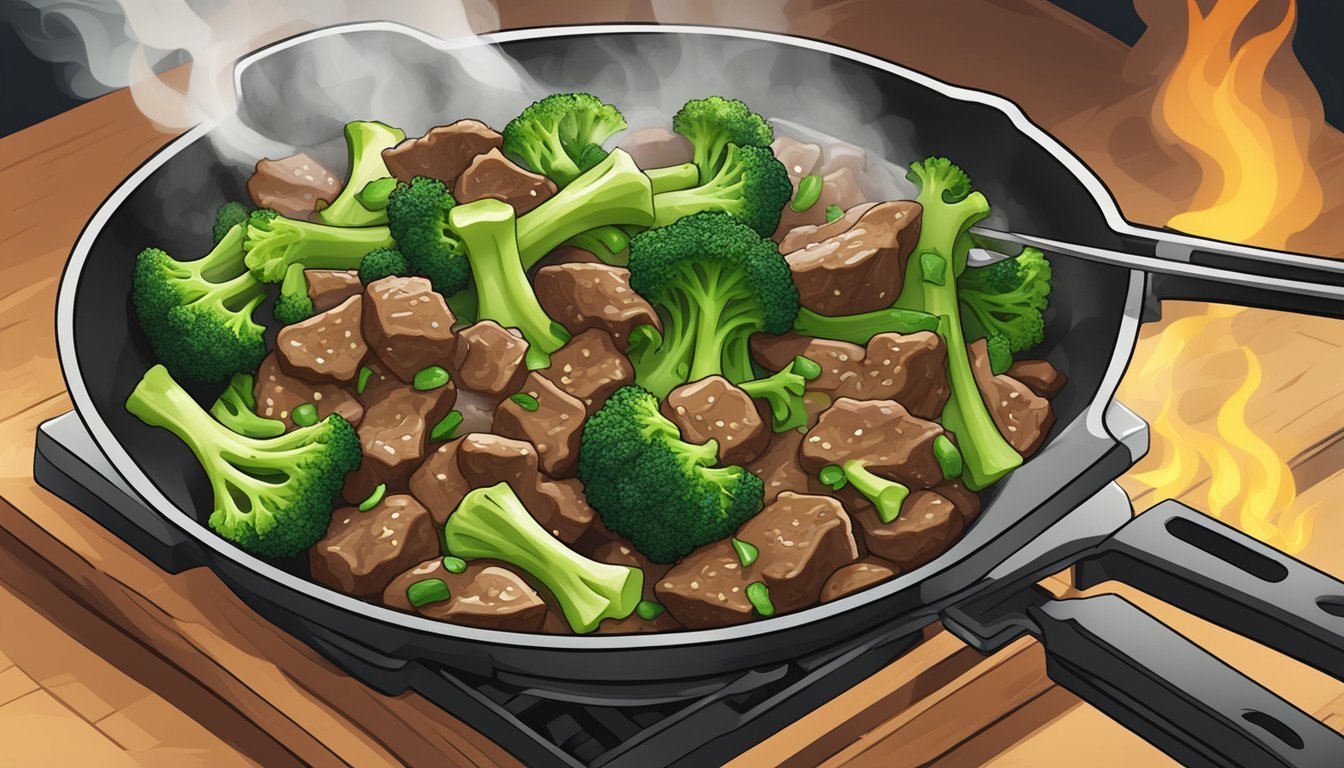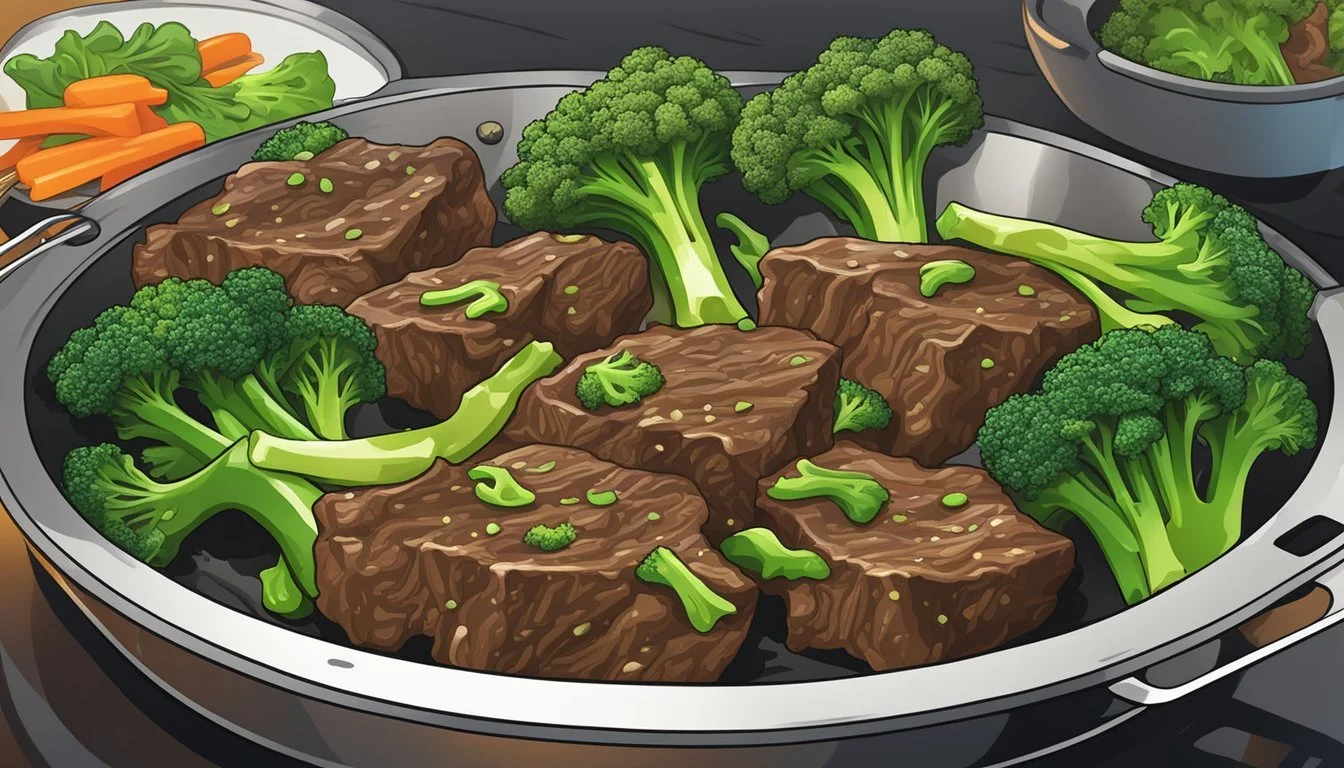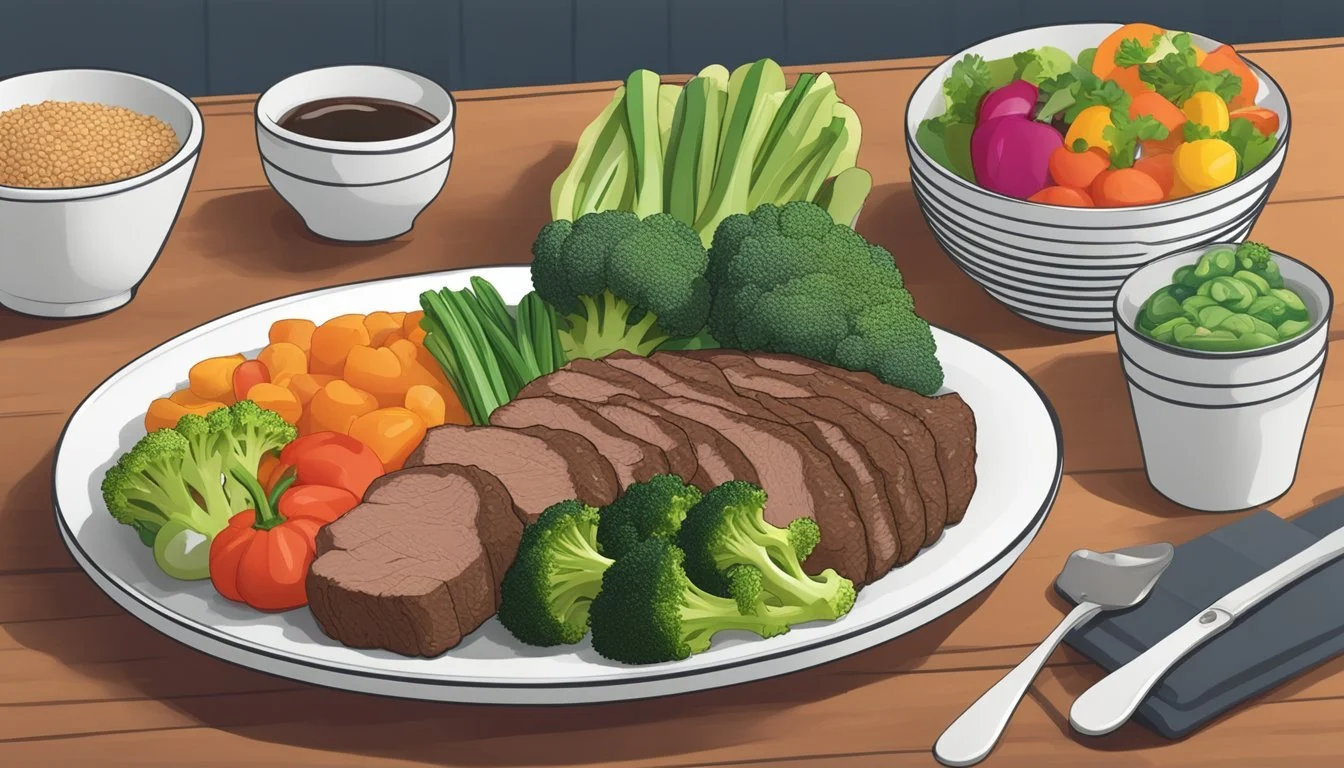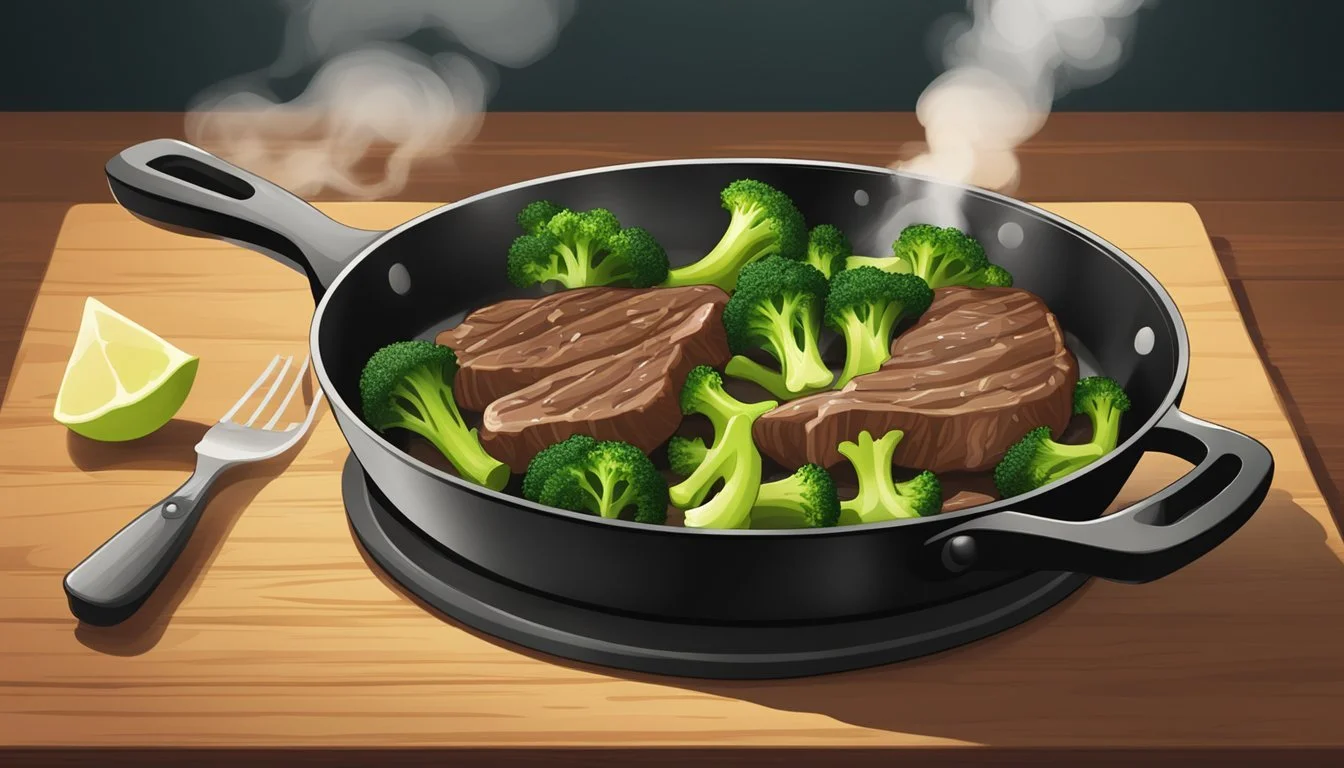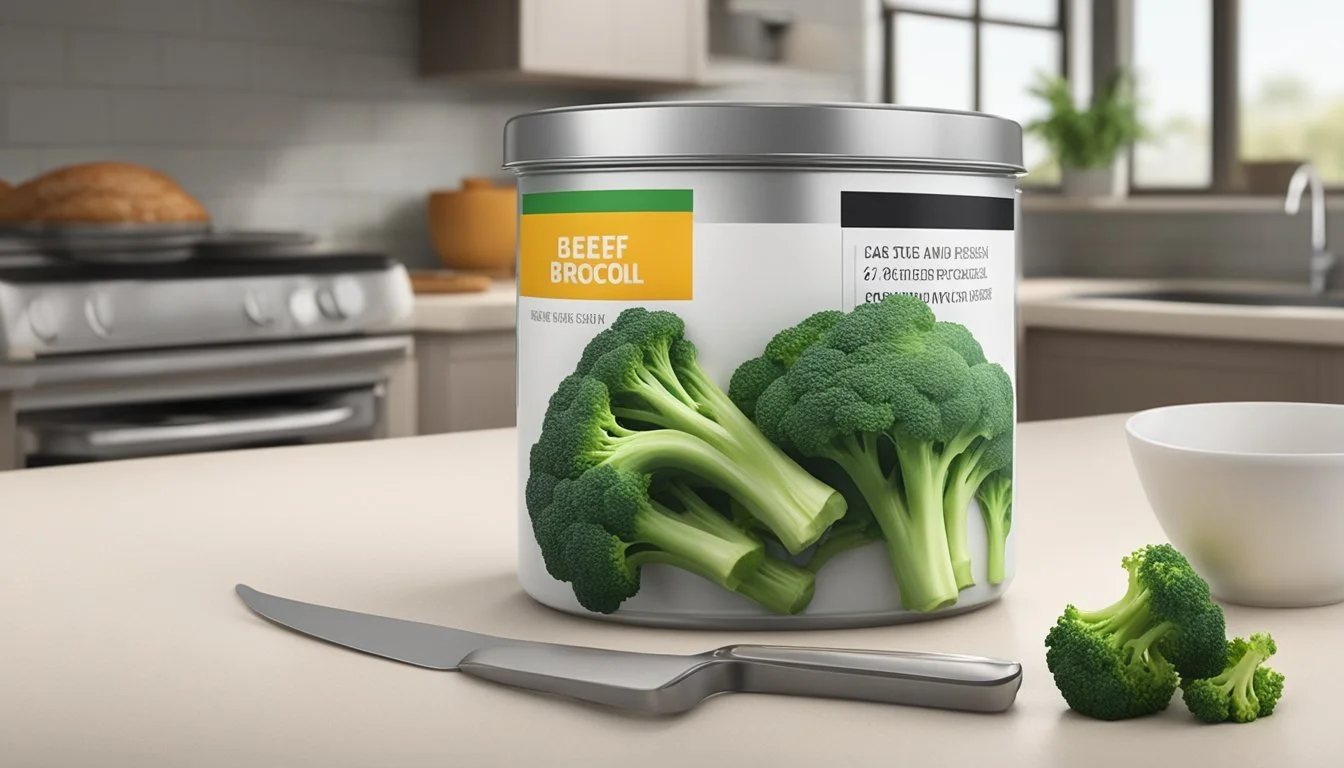How Long Does Beef and Broccoli Last?
Storage Tips and Shelf Life
Beef and broccoli is a popular dish that many enjoy both fresh and as leftovers. Whether you cooked it yourself or ordered from your favorite restaurant, knowing how long it stays good is crucial for food safety and taste.
Stored properly, beef and broccoli can last in the fridge for 3-4 days. Ensuring it's kept in an airtight container helps maintain its freshness and prevents spoilage. If you find you won’t consume it within that period, freezing is an excellent option to extend its life.
For optimal taste when reheating, it's recommended to thaw frozen portions in the fridge overnight before warming them up. These simple steps not only help keep your meals enjoyable but also safe to eat.
Beef and Broccoli Basics
Beef and broccoli is a popular dish known for its tender meat and vibrant green broccoli, often complemented by a rich, flavorful sauce. It typically involves simple ingredients and straightforward cooking methods, making it a go-to recipe for many.
Overview of Beef and Broccoli
Beef and broccoli is a staple in many households and restaurants due to its quick preparation and balanced flavors. This dish is often served with white or brown rice. The beef is usually marinated and cooked until just tender, while the broccoli retains its crisp texture. It's a well-rounded meal that includes protein from the beef and plenty of nutrients from the broccoli.
Key Ingredients
This dish mainly features beef and broccoli florets. Cuts like flank steak, sirloin, or skirt steak are commonly used for their tenderness. The sauce, typically made with soy sauce, brown sugar, cornstarch, garlic, and fresh ginger, brings the dish together with its savory and slightly sweet flavor. Sesame oil can add an extra layer of flavor.
Typical Cooking Methods
Beef and broccoli is usually cooked using a skillet or wok. The beef is often marinated with a mixture of soy sauce and cornstarch, then quickly stir-fried to retain its tenderness. Broccoli is usually blanched or stir-fried to keep it green and tender-crisp.
After cooking, the sauce ingredients are combined and simmered until thickened. The dish can be stored in the fridge in an airtight container or even frozen for longer shelf life.
These simple techniques and ingredients make beef and broccoli a delicious, healthy, and easy-to-make dish.
Nutrition and Dietary Considerations
Beef and broccoli is a dish rich in flavor and nutrients. Key considerations to keep in mind include its caloric content, macronutrients, and potential dietary restrictions or substitutions.
Caloric Content and Macronutrients
A standard serving of beef and broccoli, approximately one cup, contains around 232 calories. This dish offers a balanced macronutrient profile featuring protein, fats, and carbohydrates.
The beef provides a significant portion of the protein content, which is crucial for muscle repair and growth. Broccoli contributes primarily to the carbohydrate part, but also enhances the dish with fiber, aiding in digestion.
Additionally, beef offers essential vitamins and minerals like Vitamin B12, Zinc, and Iron. Broccoli, on the other hand, is rich in Vitamin C, Vitamin K, and antioxidants that benefit overall health. This nutrient combo makes beef and broccoli a well-rounded meal choice.
Dietary Restrictions and Substitutions
For those monitoring their sodium intake, it's beneficial to use reduced-sodium soy sauce or other low sodium alternatives in the preparation to maintain the dish's flavor without excessive salt.
Individuals following specific dietary practices can make certain substitutions. Vegetarians can replace beef with plant-based proteins such as tofu or tempeh. Gluten-free versions of soy sauce can be utilized to make the dish suitable for those with gluten intolerance.
In essence, beef and broccoli can be adapted to meet various dietary needs while still delivering a healthy and satisfying meal. Modifications can ensure that the dish remains nutritious and enjoyable for a wider audience.
Food Safety and Storage
Beef and broccoli leftovers need proper storage and handling to remain safe to eat. Consider how to correctly store them, recognize spoilage signs, and reheat safely to enjoy your meal without issues.
Proper Storage Methods
To maximize the shelf life of beef and broccoli, store it properly. Use an airtight container to prevent moisture loss and contamination. Store in the fridge at 40°F (4°C) or below. For longer storage, place it in the freezer at 0°F (-18°C). When using a fridge, consume the leftovers within 3-4 days.
Meat placed directly next to the lid of the container helps prevent excess air exposure. Freezing can extend its edibility to 2-3 months but expect some loss of texture quality.
Indicators of Spoilage
Check for spoilage before consuming leftovers. Look for visual cues like discoloration or mold growth. Spoiled beef may turn a dull gray or have green spots. Smell the food; a sour or off odor is a clear indication of spoilage.
Feel the texture. Slimy or sticky surfaces suggest bacterial growth. Don't taste food to confirm spoilage, as even small quantities of contaminated food can cause illness.
Safety Tips for Reheating
Thorough reheating is crucial for safety. Use a stove or microwave to reheat the beef and broccoli to an internal temperature of 165°F (74°C). Stir the food halfway through heating to ensure even temperature distribution.
Avoid reheating in a frying pan, as direct heat can cause drying or burning. Microwave-safe lids or microwave covers help retain moisture. If reheating from frozen, thaw in the fridge overnight before reheating to ensure even temperatures.
Always use a food thermometer to check temperatures, especially when using microwaves or stove tops. Reheating properly eliminates potential bacteria, making your meal safe to consume.
Preparation Tips and Techniques
Proper preparation ensures that Beef and Broccoli is flavorful, with tender beef and perfectly cooked vegetables. Focus on marinating the beef correctly, achieving an ideal stir-fry, and managing the vegetable prep and cook time.
Marinating and Tenderizing Beef
To make beef tender, marinating plays a crucial role. Thinly slice the beef against the grain to break down muscle fibers. Use a marinade that includes soy sauce, sesame oil, garlic, and ginger. A touch of brown sugar can help to balance the flavor and enhance caramelization.
Marinate the beef for at least 30 minutes in the fridge. This gives the flavors time to penetrate and tenderize the meat. For tougher cuts like chuck steak, marinate longer or consider using a meat tenderizer.
Achieving the Perfect Stir-Fry
When stir-frying, use a large skillet or wok on high heat. Preheat the pan before adding oil to ensure a good sear on the beef. Stir-fry the meat in small batches to avoid overcrowding, which can reduce the temperature and lead to steaming instead of searing.
Once the beef is cooked, set it aside and stir-fry the broccoli in the same pan. Add a small amount of water to steam the broccoli, making it tender-crisp and bright green. Reintroduce the beef and any sauce, tossing to coat everything evenly.
Vegetable Prep and Cook Time
For the broccoli, cut it into bite-sized florets to ensure even cooking. Wash thoroughly and let it drain to avoid excess water in the skillet. Pre-cooking the broccoli by steaming for a minute or two can speed up the stir-fry process and maintain its vibrant color and crunch.
Cook the broccoli until it becomes fork-tender but still crisp, usually about 3-5 minutes in the skillet. This method preserves nutrients and texture. Keeping an eye on cook time ensures the vegetables do not become mushy, maintaining the dish's overall quality.
Recipe Variations and Serving Suggestions
This section explores various options for altering the traditional beef and broccoli recipe, including swapping proteins and vegetables, pairing with side dishes, and adding creative twists to the classic dish.
Alternative Proteins and Vegetables
Chicken and shrimp can replace the beef for lighter alternatives. Chicken should be sliced thin and cooked until white in the middle, while shrimp is best when it turns pink and opaque. These substitutions maintain the dish's high protein content and complement broccoli well.
For vegetables, consider adding mushrooms, green onions, or bell peppers. These additions enhance both flavor and color. Other greens such as bok choy or snap peas can also be used. They cook quickly and bring fresh flavors to the stir-fry.
Side Dishes to Complement Beef and Broccoli
Steamed rice or cauliflower rice is a popular accompaniment for beef and broccoli, offering a neutral base that absorbs the sauce's flavors. Noodles, such as rice or egg noodles, also pair well, making the meal more filling.
For those seeking low-carb options, roasted or steamed vegetables like asparagus or brussels sprouts can be included. Alternatively, a simple green salad with a light dressing serves as an excellent side. These sides keep the meal balanced and nutritious.
Creative Twists on Traditional Recipe
Adding a twist to the classic beef and broccoli can make it more interesting. Oyster sauce, mixed with the usual soy sauce, adds a rich depth of flavor. A sprinkle of black pepper enhances the dish's savory profile.
For a sweet and spicy variation, include some honey and red pepper flakes in the sauce. Serving over a bed of fresh broccoli instead of cooked can add a crunchy texture. Including toasted sesame seeds or cashews as toppings introduces an additional layer of flavor and crunch.
Using the ideas presented can elevate the beef and broccoli recipe, making it adaptable to various tastes and dietary preferences. Enjoy experimenting with different ingredients to find your perfect combination.
Culinary Insights
Beef and broccoli is a popular dish that combines tender beef with fresh broccoli in a savory sauce. This section examines its cultural significance, comparisons with other Asian dishes, and pairing suggestions with beverages.
Cultural Significance of Beef and Broccoli
Beef and broccoli is a staple in Chinese-American cuisine, often featured in Chinese takeout menus. It reflects a blend of Asian and American culinary traditions, bringing together the rich flavors of soy sauce, garlic, and ginger with the wholesome taste of broccoli.
In Chinese restaurants, this dish symbolizes a fusion approach, as it is not traditionally found in Mainland China. Instead, it represents how Chinese chefs adapted their cooking to local American tastes, offering a healthier option among the usual fried dishes.
Comparison to Other Asian Dishes
When compared to other popular Asian dishes like Sweet and Sour Chicken, Mongolian Beef, and Chow Mein, beef and broccoli stands out for its balance of simplicity and nutrition. Sweet and sour chicken often features a tangy, sugary sauce, whereas beef and broccoli emphasizes a light, savory flavor profile.
Mongolian beef also shares similarities, primarily focusing on tender beef slices, but it often incorporates a sweeter sauce and more complex spices. Meanwhile, chow mein and fried rice are carbohydrate-heavy, serving as either side dishes or main staples, whereas beef and broccoli tends to be a protein-vegetable centered main course.
Pairing with Beverages
Pairing the right beverage with beef and broccoli enhances the dining experience. Green tea complements the dish's flavors, offering a refreshing and palate-cleansing effect. It also aligns with the health-conscious nature of the dish.
For those who prefer an alcoholic option, a light white wine such as Sauvignon Blanc is an excellent choice. Its crispness contrasts with the savory elements, creating a balanced taste. Alternatively, a light, mild beer can also pair well, providing a subtle richness without overwhelming the dish's delicate flavors.
Frequently Asked Questions
When storing and cooking Beef and Broccoli, understanding the best practices for preserving its flavor and texture is essential. Below are answers to some common concerns about preparing and storing this popular dish.
Common Concerns About Cooking Beef and Broccoli
How long can Beef and Broccoli last in the fridge?
Beef and Broccoli, when stored in an airtight container, can remain fresh in the fridge for about 3-4 days. Ensuring the dish is stored properly helps maintain its tender meat and green broccoli for a savory flavor.
Can Beef and Broccoli be frozen?
Yes, freezing is an option if you don’t plan on eating it within a few days. Place the Beef and Broccoli in a sealed container and store it in the freezer. For best results, consume within 2-3 months to retain its quality.
How can I reheat Beef and Broccoli without losing texture?
Reheat Beef and Broccoli quickly to avoid overcooking. Use a microwave or a stovetop, adding a small amount of olive oil or water to keep the dish moist and retain its flavorful sauce. Stirring occasionally will help distribute the heat evenly.
Conclusion
Beef and broccoli, when stored correctly, can maintain its quality for several days.
In the refrigerator:
Cooked Beef and Broccoli: Consume within 3-4 days.
Raw Broccoli: Typically lasts 7-14 days.
Cooked Broccoli: Best within 7-9 days.
For longer preservation, freezing is a viable option. Ensure food is kept in airtight containers to maximize freshness. Proper storage minimizes waste and maintains flavor.
Maintaining optimal storage conditions is crucial to prevent spoilage and ensure safety.

